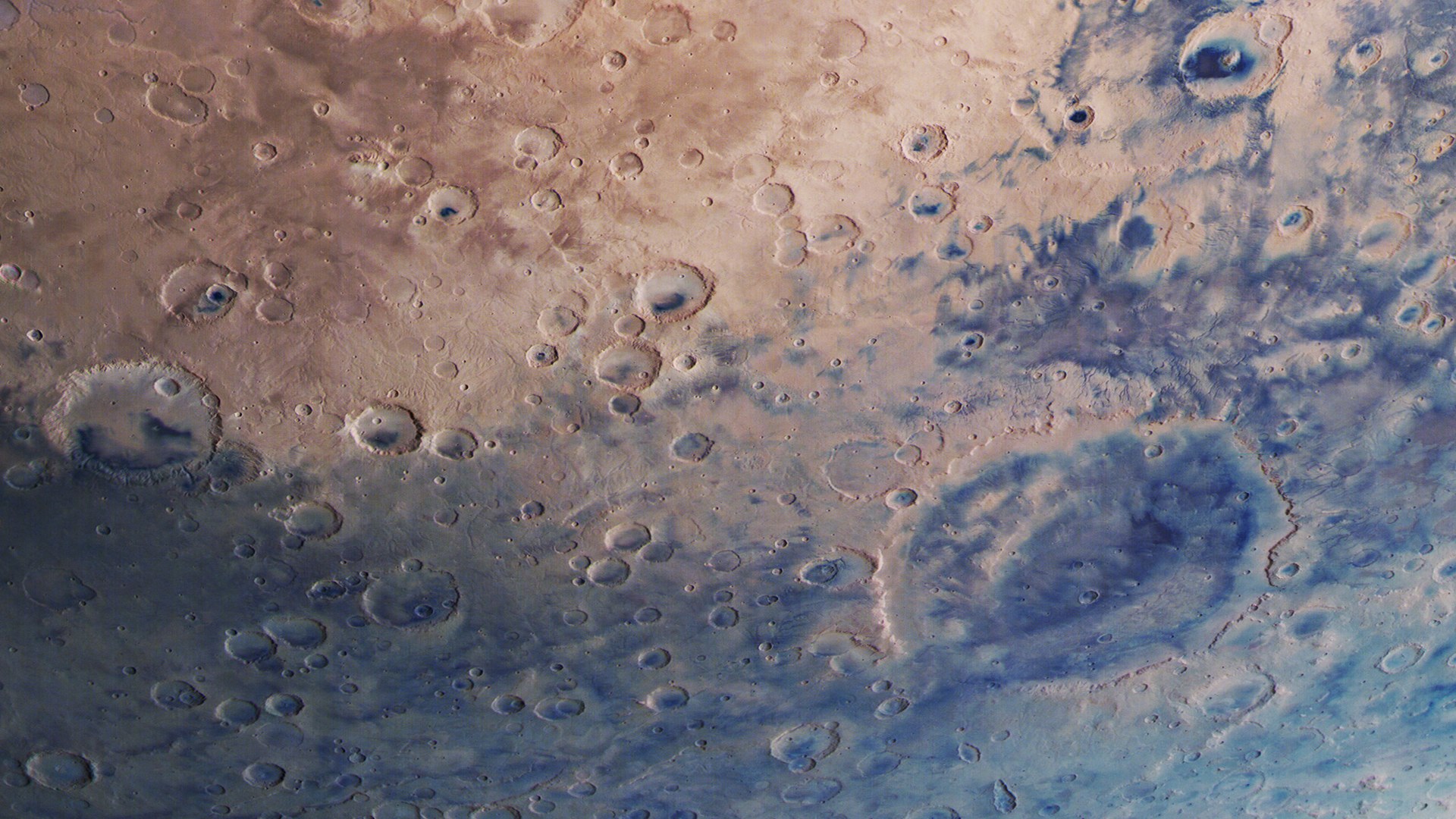Deposits of dark dust and sand in Huygens Crater
Deposits of dark dust and sand in Huygens Crater
Huygens Crater, which is 465 kilometres across, is located at 55 degrees east and 14 degrees south and can be seen in the large HRSC image. It was named after the Dutch astronomer Christiaan Huygens (1629–1695). Like Cassini Crater, the Huygens Basin is very old – probably dating back four billion years or more – and has already been heavily eroded. Impact structures of this size often have one or more rings in their interior, in addition to the crater rim itself, due to the effect of the planet’s crust springing back following the impact. This ring is no longer discernible in Cassini Crater, but it remains visible for Huygens, with darker sand carried into the crater by the wind allowing the shape of the inner ring to be seen. Major changes that occur on the surface of Mars today are primarily due to wind. Shifting of dark sands due to wind can be observed in many places today. While these volcanic sands form vast dune fields in depressions such as impact craters, they are often deposited over large areas in extensive layers, giving large parts of the planet a dark appearance. The shifting of the dunes can be observed over a timeframe of one to two years using high-resolution image data.

